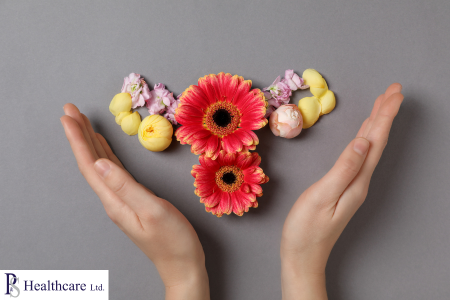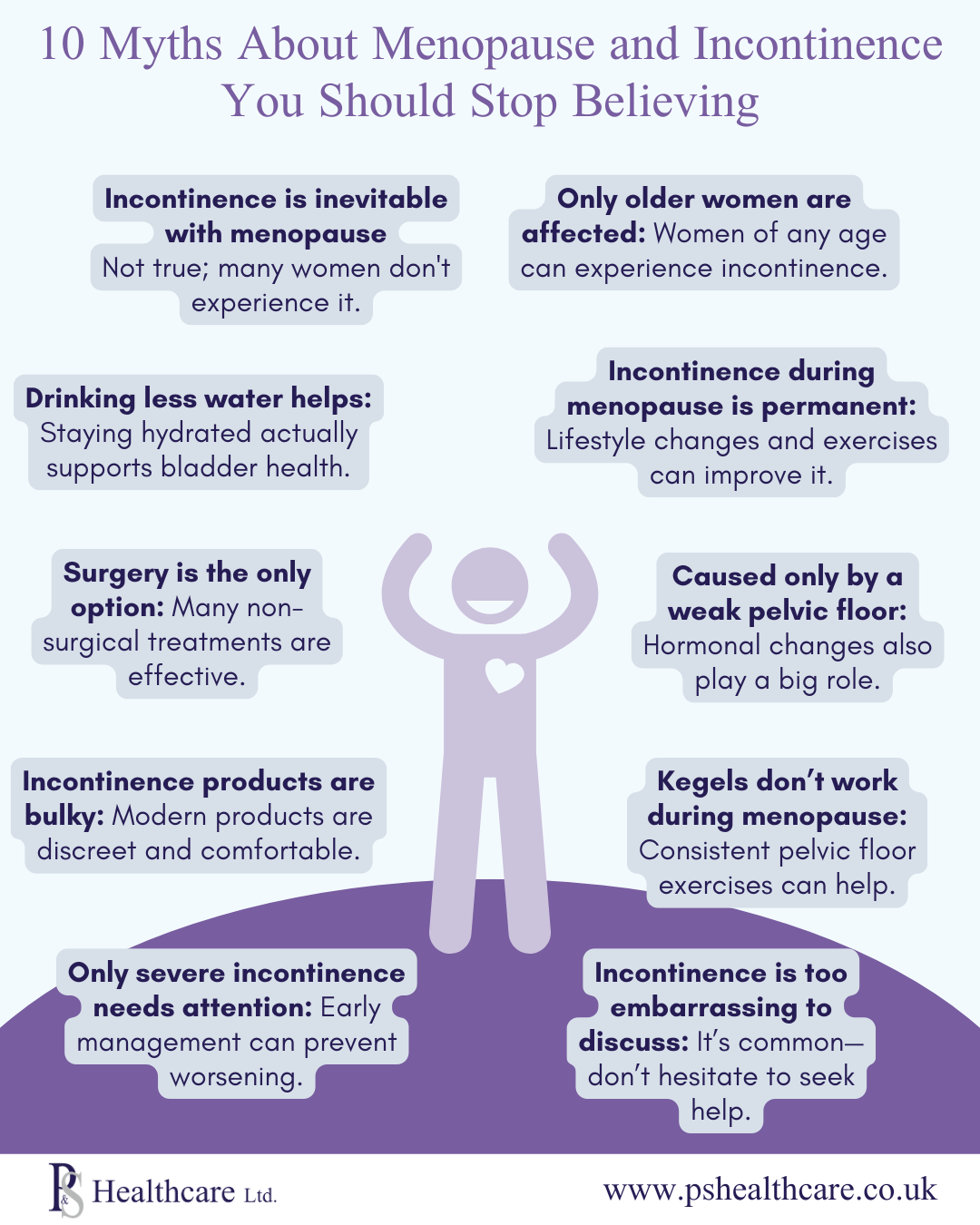10 Myths About Menopause and Incontinence You Should Stop Believing

Menopause brings about many changes in a woman’s body, and for some, it can also lead to bladder control issues. However, there's still a lot of misinformation about the connection between menopause and incontinence. Here we consider 10 common myths and replace them with facts to help you understand what really happens during this natural phase of life.
Myth 1: Incontinence is an inevitable part of menopause
Fact: Not all women experience incontinence during menopause. Although hormonal changes can affect bladder control, lifestyle factors, health choices, and individual physiology also play roles. Many women go through menopause without any significant bladder issues.
Myth 2: Only older women experience incontinence
Fact: Incontinence can affect women of all ages, though it’s more common after menopause. Hormonal shifts can impact bladder function, but factors like childbirth, genetics, and lifestyle choices can contribute to bladder control issues at any age.
Myth 3: Drinking less water will reduce incontinence
Fact: Dehydration can actually worsen bladder issues. When you don’t drink enough water, urine becomes more concentrated, which can irritate the bladder lining and increase urgency. Staying hydrated helps maintain bladder health, even if you’re managing incontinence.
Myth 4: Menopause-related incontinence is always permanent
Fact: Many women find that lifestyle changes, pelvic floor exercises, and treatments can greatly improve or even resolve incontinence. The right approach to bladder health during menopause can make a big difference in managing symptoms effectively.
Myth 5: Surgery is the only solution for incontinence
Fact: Surgery is just one option, often considered only after other treatments have been tried. Pelvic floor exercises, bladder training, dietary changes, and in some cases, medication, can help manage incontinence effectively without the need for invasive procedures.
Myth 6: Incontinence is only caused by a weak pelvic floor
Fact: While weakened pelvic muscles can contribute to incontinence, menopause-related incontinence is often influenced by hormonal changes. The decrease in estrogen can affect bladder and urethra tissues, making them less elastic and more prone to leakage.
Myth 7: Incontinence products are bulky and uncomfortable.
Fact: Today’s incontinence products are designed with comfort, discretion, and convenience in mind. From sleek, absorbent underwear to eco-friendly reusable options, there are many modern choices that provide protection without sacrificing comfort.
Myth 8: Kegel exercises aren’t effective for menopausal incontinence
Fact: Pelvic floor exercises, or Kegels, are highly effective for many women. Strengthening these muscles can improve bladder control and reduce leakage, even during menopause. Consistency is key for seeing results over time.
Myth 9: You should only seek help for severe incontinence
Fact: Incontinence is a common issue, and there’s no need to wait until symptoms are severe before seeking help. Even minor leakage can be improved with lifestyle changes, physical therapy, and support from a healthcare provider.
Myth 10: Incontinence is embarrassing, and you shouldn’t talk about it
Fact: Incontinence is a common health issue, especially during menopause. There’s no need for embarrassment. Open conversations with healthcare professionals and support networks can lead to effective management strategies, empowering women to take control of their health.
Menopause doesn’t have to mean giving up control over your bladder health. By understanding the facts and dispelling myths, women can make informed decisions about managing incontinence effectively. P&S Healthcare offers a range of discreet, comfortable incontinence products tailored to meet diverse needs, empowering women to maintain their quality of life through every stage. Remember, you’re not alone, and support is available.
Don't forget to save our useful infographic:

More News:
- 10 Things You Should Know About Postpartum Incontinence
- 10 Common Triggers of Urinary Incontinence in Women Over 50
- 10 Tips for Night-Time Incontinence Management in Adults
- 10 Ways to Manage Incontinence While Playing Sports
- 10 Tips for Managing Faecal Incontinence in Adults
- 10 Lifestyle Changes to Manage Urinary Incontinence Symptoms
- 10 Ways to Manage Urinary Incontinence During Pregnancy
- 10 Causes of Urinary Incontinence in Men and How to Treat Them
- 10 Practical Solutions for Coping with Incontinence at Work
- 10 Myths About Menopause and Incontinence You Should Stop Believing
- 10 Foods to Avoid to Prevent Bladder Irritation and Incontinence
- 10 Effective Pelvic Floor Exercises for Urinary Incontinence
- 10 Common Causes of Bedwetting in Children and How to Address Them
- Causes of Faecal Incontinence
- Breaking the Silence: Managing Incontinence with Confidence
- Supporting Loved Ones with Incontinence: A Caregiver's Guide
- Top 10 Tips for Managing Incontinence Comfortably This Christmas
- Pregnancy and Postpartum Incontinence: Prevention and Recovery
- 10 Random Facts About Pee You Probably Didn't Know
- Diet and Bladder Health: Foods That Help and Hurt
- Helping Your Child Manage Incontinence: A Parent's Resource
- The Most Common Bladder Control Problems and How to Manage Them
- 10 Things That Can Make Incontinence Worse
- Incontinence Myths vs Facts - Dispelling Common Misconceptions
- Top 10 tips to help with bladder control during pregnancy
- 10 Effective Ways to Stop Bladder Leaks & Manage Incontinence
- P&S Washable Face Mask with ViralOff
- New Product For Men - The Slip Brief
- New Monthly Protection Briefs For Women
- New Product - The OooPS Pant for Stress Incontinence
- New Adult Inco-elite Range Launched
- EMDA WOMEN OF WORTH AWARD 2009
- New Website Launched
- New Website Under Development

